
Transference of Knowledge
This page shares how participants for any aspect of the Learning for Life program can transfer their gained knowledge, skills, and education to any other environment. We discuss the details of this component with the following sections:
- Transference of Knowledge Overview
- Why Open Source this Component
- Ways to Contribute
- Significant Contributors to this Component
- Knowledge Transference Details
- Summary
- FAQ
- Resources
IF YOU’D LIKE TO HELP ADD TO THIS COMPONENT, JOIN US THROUGH OUR GET INVOLVED PAGE
RELATED PAGES
EDUCATION OVERVIEW | HOW TO USE THIS PROGRAM | OUR OPEN SOURCE PURPOSE
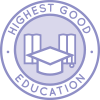
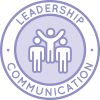
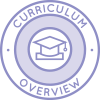
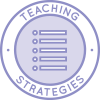
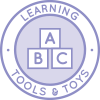
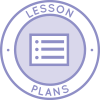
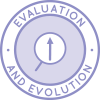
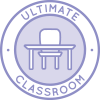
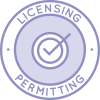

TRANSFERENCE OF KNOWLEDGE OVERVIEW
 The complete Evaluation and Evolution process is our structure for assessing, maintaining, and improving the educational process within the Learning for Life program. Part of this process is making a person’s educational experience transferable and applicable to other learning environments. We are developing a variety of tools and approaches to accomplish this. They include:
The complete Evaluation and Evolution process is our structure for assessing, maintaining, and improving the educational process within the Learning for Life program. Part of this process is making a person’s educational experience transferable and applicable to other learning environments. We are developing a variety of tools and approaches to accomplish this. They include:
- Google Doc tracking of progress, reviews, goal setting, and accomplishments
- Specific educational mile markers that earn badges for accomplishing them
- The complete educational program intentionally training for ACT/SAT proficiency
- Other standardized tests

WHY OPEN SOURCE THIS

One Community is about creating positive and permanent global transformation through open source and self-replicating teacher/demonstration hubs. Transfer of knowledge is a crucial element of this process and the Learning for Life program and its goals to make the content adaptable and applicable to all ages and almost any learning environment. From our perspective, the program and what people learn through it need to transfer seamlessly into more traditional learning environments if the program is to have maximum mainstream potential.
By open sourcing our structure for monitoring progress and transferring the results to other work and/or educational environments, we hope this component will be an inspiration and structure usable and helpful in other alternative education programs, home schooling environments, and work environments too. This is directly in alignment with our Purpose and Mission, our Global-transformation Pledge, and Highest Good philosophy for open source creation, sharing, and making a difference in the world.

WAYS TO CONTRIBUTE TO EVOLVING THIS EDUCATION PROGRAM WITH US
SUGGESTIONS | CONSULTING | MEMBERSHIP | OTHER OPTIONS
SIGNIFICANT CONTRIBUTORS TO THIS COMPONENT
Ellen Ross Kaspi: Progressive Educator and Mind/Body Modality Specialist
Jessica Wienke: Organizational and Leadership Development Consultant
Sangam Stancza: Ph.D. and P.E.
Stephanie VanderKallen: Mental Health Professional and Teacher
TRANSFERENCE OF KNOWLEDGE DETAILS
 As stated above, the purpose of this education component is to make the content adaptable and applicable to all ages and almost any learning environment. Our goal is for teachers and students to be able to use the templates and tools here as stand-alone components, as part of the complete Learning for Life program, or in combination with other educational or work environments. This means the experience and placement details, educational and/or work mile markers, and other relevant details must be transferrable from these environments to more traditional ones if they are to be maximally usable.
As stated above, the purpose of this education component is to make the content adaptable and applicable to all ages and almost any learning environment. Our goal is for teachers and students to be able to use the templates and tools here as stand-alone components, as part of the complete Learning for Life program, or in combination with other educational or work environments. This means the experience and placement details, educational and/or work mile markers, and other relevant details must be transferrable from these environments to more traditional ones if they are to be maximally usable.
We discuss how this is accomplished with the following four sections:
- Tracking and documenting results
- Transferring to other educational environments (educational use)
- Transferring to other professional environments (professional use)
- Transferring to other personal development environments (personal use)

TRACKING AND DOCUMENTING RESULTS
Tracking and documenting results is essential to assure all areas of importance are covered. We’re developing an entire page dedicated to objective data and analysis to support this. It shares additional tests that can be used and resources we’ve found helpful like the Spectrum Books for grade-based subject-by-subject study and evaluation.
In addition to the above, the complete Evaluation and Evolution process is suggested to be maintained using Google Docs. This allows for easy collaboration, sharing (if desired), review at a future point, and convenient information storage. See the Information Maintenance and Sharing page for more about this.
Collectively, these allow for use of the unique evaluation tools and processes of the complete Learning for Life program to be easily combined and maintained with broadly accepted evaluation methods like:
- Traditional in-school standardized testing by grade or subject
- American College Testing (ACT)
- Scholastic Aptitude Testing (SAT)
- Intelligence Quotient Testing (IQ Tests)
Any or all of these can then be used whenever needed to share a Learner’s proficiency across relevant subjects and educational content.
OTHER EDUCATIONAL ENVIRONMENTS
Transferring to other educational environments is assumed to be any situation where a person has been using the Learning for Life program and/or it’s components for a year or more and is then desiring to transfer what they’ve learned into a more traditional environment like a public or private school or university. Some schools have their own admittance tests, others will accept existing records, some will accept/require standardized tests like the ACT or SAT tests. If it is known far enough in advance where an individual plans to transfer to, we recommend that you contact the institution to learn about their specific entrance expectations and needs so you can prepare for them before moving.
ADMITTANCE TESTS
Admittance tests are tests given by a specific educational organization to gauge an individual’s knowledge level across the areas that are considered most important to that educational organization or institution. These tests can vary greatly, so the best approach to preparing for them is a well-rounded education. See the One Community Objective Data and Analysis page for the more traditional means of how we have structured the Learning for Life program to measure this. Review the rest of the Evaluation and Evolution process to see how we go beyond these more traditional assessment approaches.
Contacting the organization or institution you are moving to and asking what their admittance testing process is can also be helpful in preparing for them. One Community’s current admittance testing process can be accessed through the One Community Invitation page.
EXISTING RECORDS
Most educational programs maintain records on the progress, attendance, and other details for each member of their program. Depending on how detailed these are, they may be usable and/or necessary for admission to some programs. The Assessment Forms page shares the forms and format we’ve developed for regular evaluations that cover all areas outside of standardized testing. These forms are Google Docs and designed for sharing with whomever the individual desires and they may also be acceptable for admission and placement when transferring to another education program.
STANDARDIZED TESTS
Standardized testing and grading are some of the most common forms of evaluation used to track progress and the success of educational programs. With this in mind, we’ve designed the Learning for Life program to be easily combined and maintained with integration of the ACT, SAT, and other standardized testing methods. Organizations can use whichever ones they consider best and we suggest exploring the amazing apps, online preparatory programs, books and other resources available if you’d like to make any or all of the college entry tests part of the actual curriculum design process. To learn more about how this can be done, visit the One Community Objective Data and Analysis page.
OTHER PROFESSIONAL ENVIRONMENTS
The Learning for Life program is also designed for use in conjunction with work environments, internships, work-study environments, etc. The intent being that any of these environments can function as educational opportunities integrated into the Learning for Life program if the desire, staff, and student maturity exists for them to be used. The Assessment Forms page shares the forms and format we’ve developed for helping record progress in these areas.
In addition to this, we’re also developing the Highest Good Network open source software program for tracking contributions to various projects. This software will integrate with the Learning for Life program and is being developed to include badges that will be awarded when a variety of different milestones have been achieved. These milestones are all resume-ready bullets and represented by awarded badges like the ones below. These badges cover everything from hours invested in a project, to maximum hours invested in a week, or contribution to multiple significant categories of a project, operating in a management position, exceptional attendance, etc.
Adults also use this software for tracking their time with One Community and can use these badges in the same way. A similar awards system could also be used without the software. Either way, tracking notable achievements like these is one way to support adults wishing to transfer to new environments and wanting an easy way to share their accomplishments as part of their transfer process.
OTHER PERSONAL DEVELOPMENT ENVIRONMENTS
The Assessment Forms page also shares a structure designed for transferring knowledge and experience to other personal development environments. This could be for other classes, teaching positions, or just personal use throughout a lifelong growth path and process. Being based in Google Docs makes them easy for the owner to edit, copy or share, add or remove collaborators, and expand indefinitely.
SUMMARY
 The transference of knowledge means that the learner is able to apply the knowledge they learn through the Learning for Life program to whatever other environments, learning process, and/or standard tests the learner desires to pass. Use the Assessment Forms page to explore all the resources for evolving the learning process and recording progress with an alternative education program like this one. Visit the One Community Objective Data and Analysis page for the more traditional and standardized ways we’ve developed. Through applying both of these, we believe we can make the entire learning and transference process more fun, effective, and successful.
The transference of knowledge means that the learner is able to apply the knowledge they learn through the Learning for Life program to whatever other environments, learning process, and/or standard tests the learner desires to pass. Use the Assessment Forms page to explore all the resources for evolving the learning process and recording progress with an alternative education program like this one. Visit the One Community Objective Data and Analysis page for the more traditional and standardized ways we’ve developed. Through applying both of these, we believe we can make the entire learning and transference process more fun, effective, and successful.

FREQUENTLY ANSWERED QUESTIONS
Q: Are all aspects of this Evaluation and Evolution component necessary?
We consider all aspects listed above as important but how a person or organization chooses to use them is up to that individual or group. To maximize the flexibility and application options, all components are designed to be usable in combinations, as part of the complete model, or as a stand-alone components.
Q: What if I have my own transference system that I like better, can I use that instead?
Of course! All aspects of the Education for Life program are designed for use in any educational environment and with or without inclusion of any other aspect of the program.
OTHER RESOURCES
We're building a resource section. Click here if you have a suggestion or resource for this page.
OPEN SOURCE SUBJECT RESOURCES (click icons for complete pages)
OPEN SOURCE CURRICULUM OUTLINES (click image for summaries and links to complete pages)
CARE
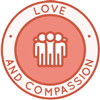
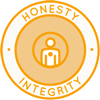
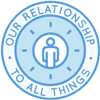
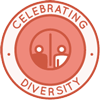
SHARE
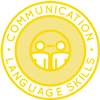
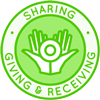
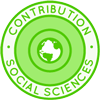
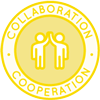
PLAY
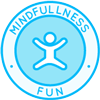
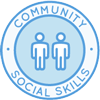
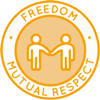
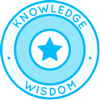
OPEN SOURCE TEACHING METHODOLOGY SUMMARIES
Montessori | Waldorf | Orff | Reggio | Multi-Intelligence | Bloom's Taxonomy | Study Tech | I-WE
INDEX OF ALL THE ONE COMMUNITY OPEN SOURCE LESSON PLANS
THE WORLD'S LARGEST ONLINE FREE EDUCATION RESOURCE ARCHIVE
RELATED CONTENT AND OTHER RELATED RESOURCES
We're building this resource section. Click here if you have a suggestion or resource for this page.
 One Community
One Community



